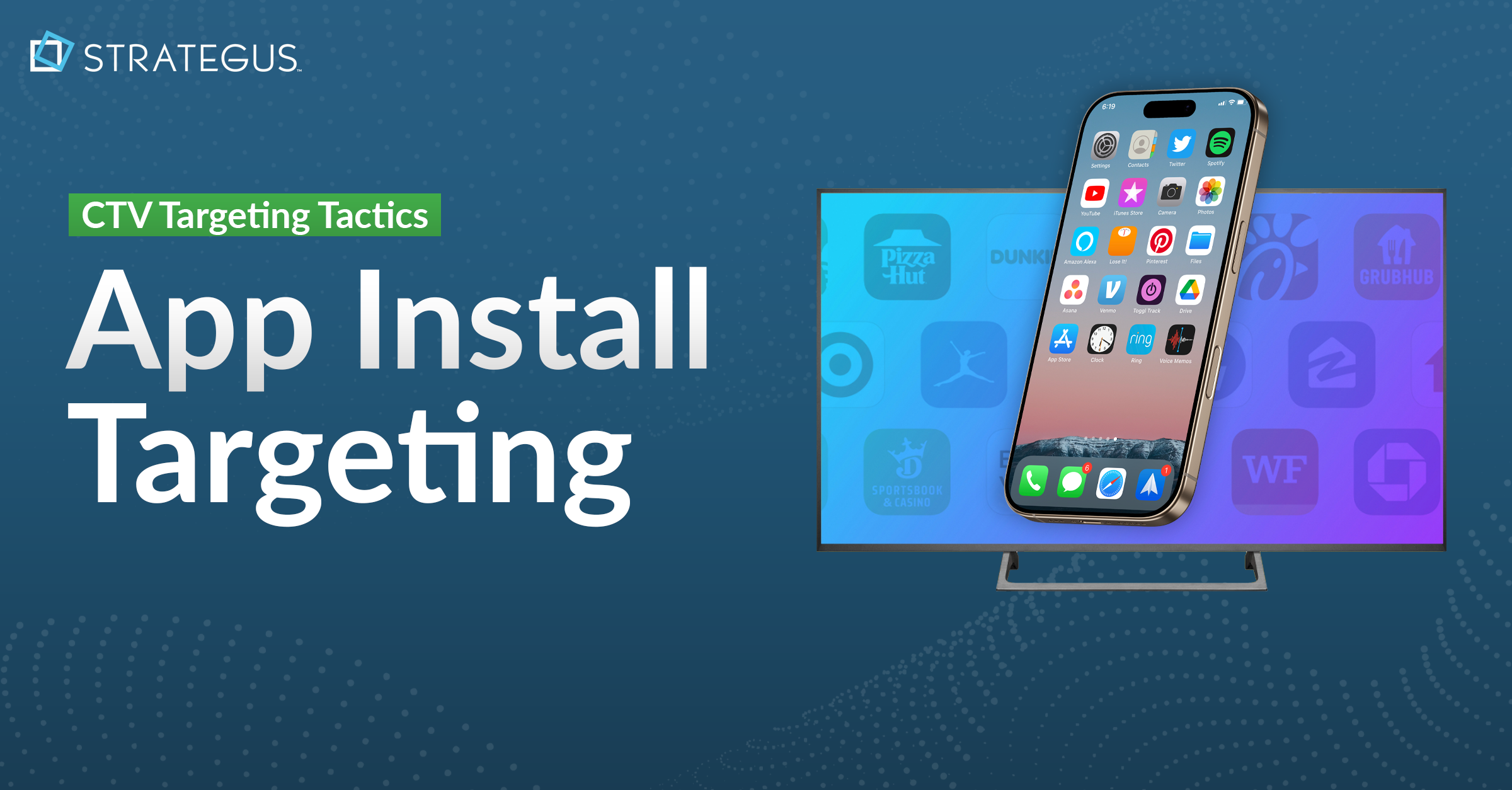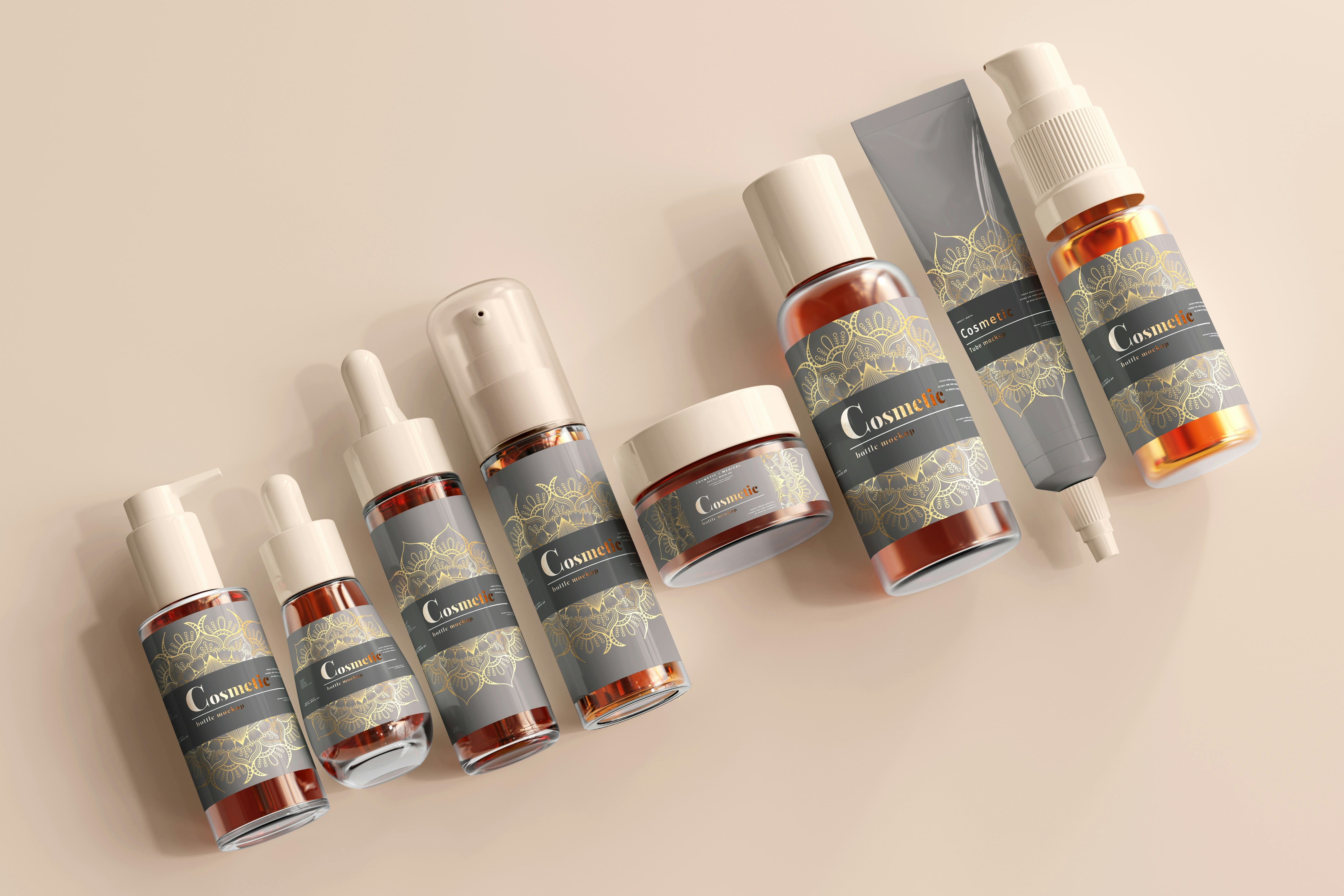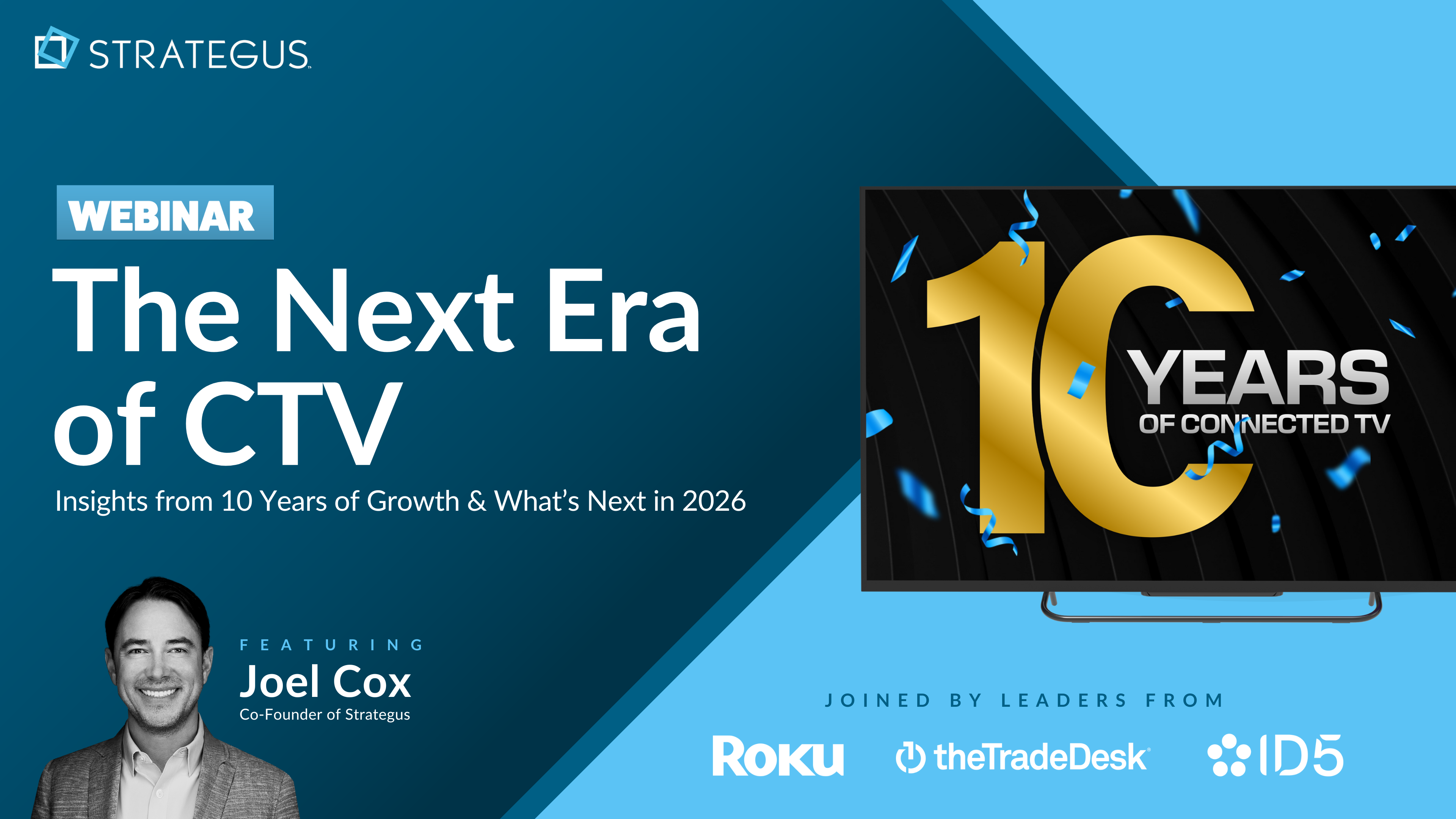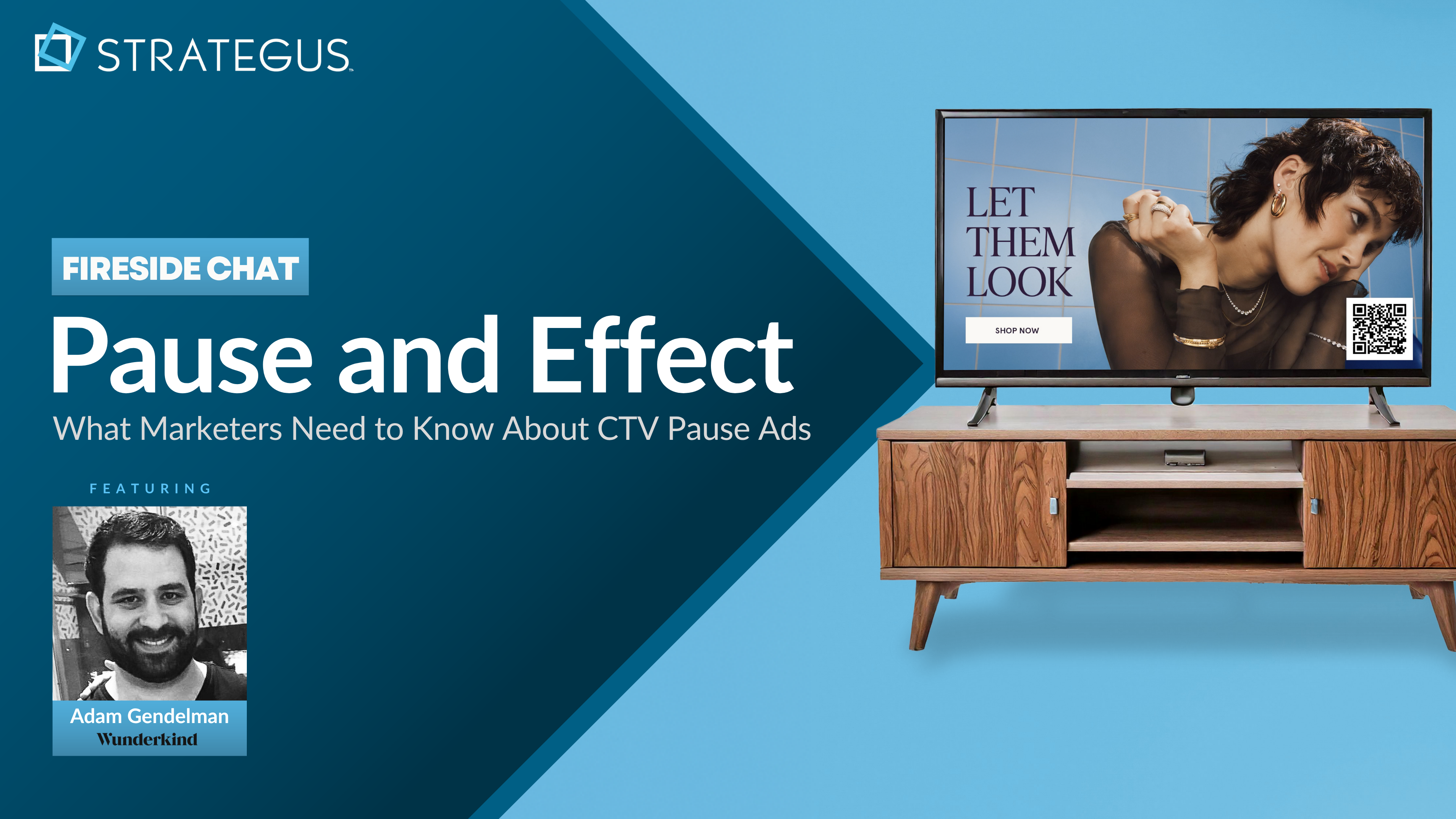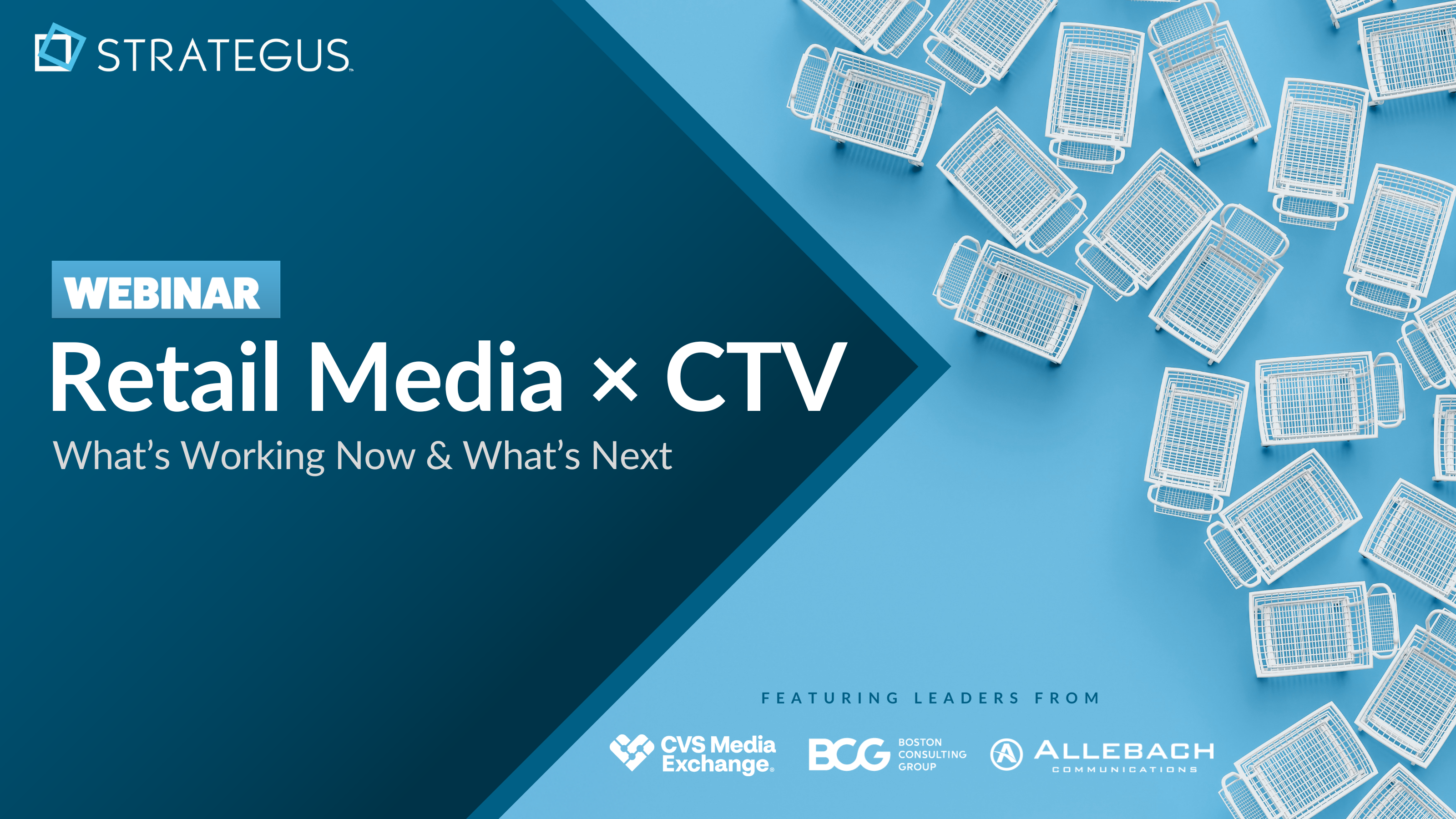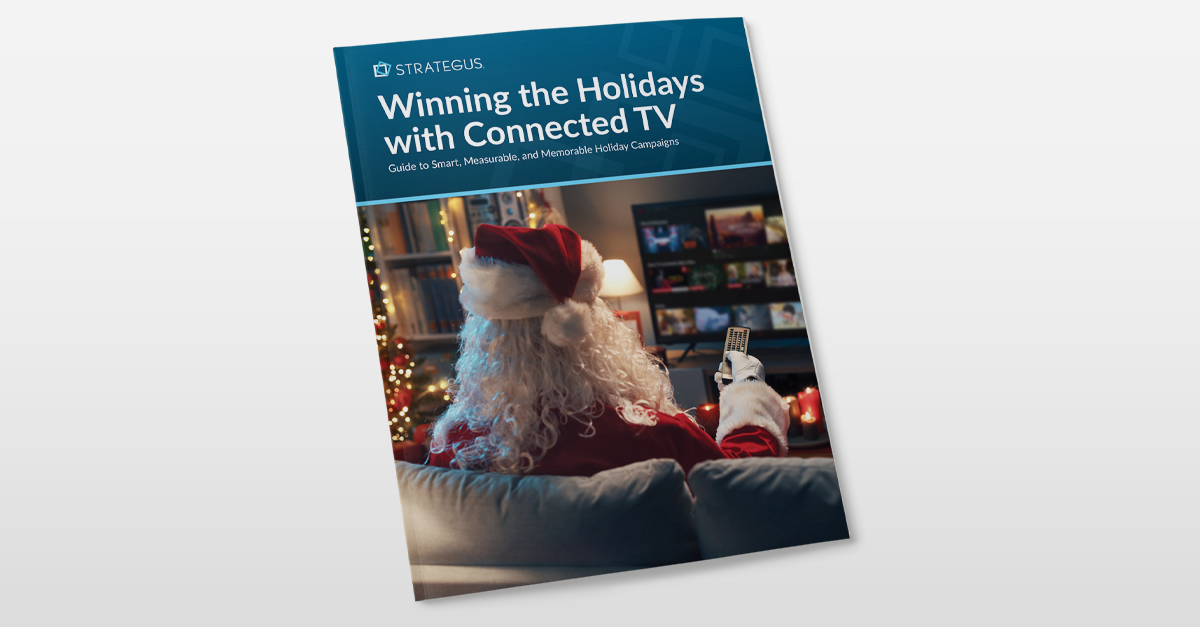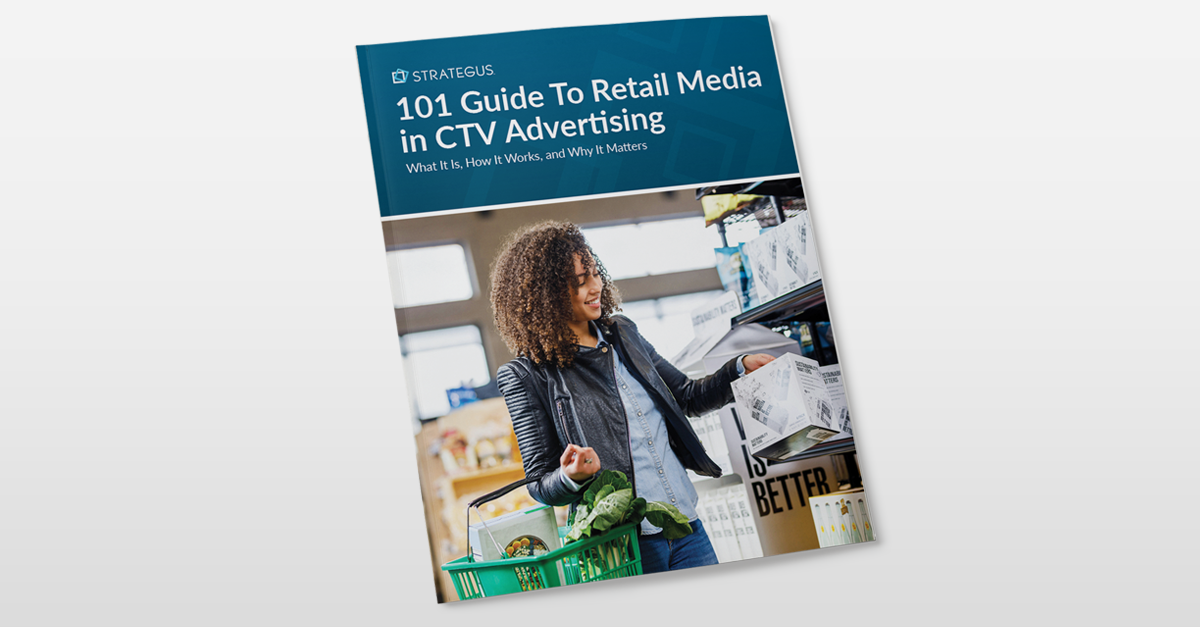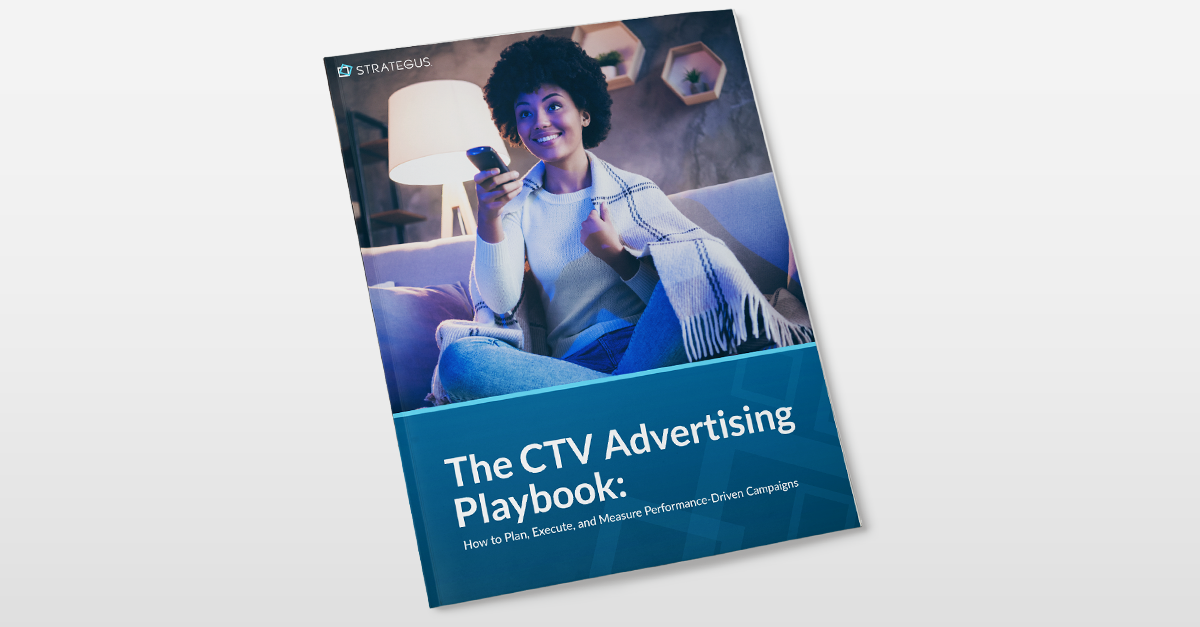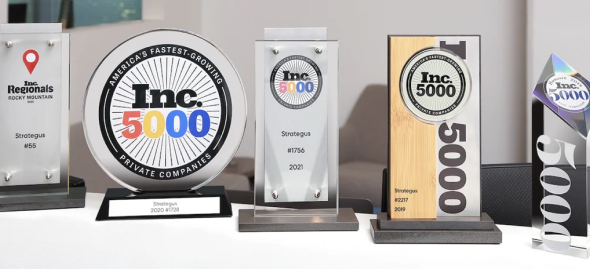- Home
- Strategus Blog
- Programmatic Advertising for Small Businesses: 2025 Guide
Programmatic Advertising for Small Businesses: 2025 Guide
 Traci Ruether
Traci Ruether
12 minutes read
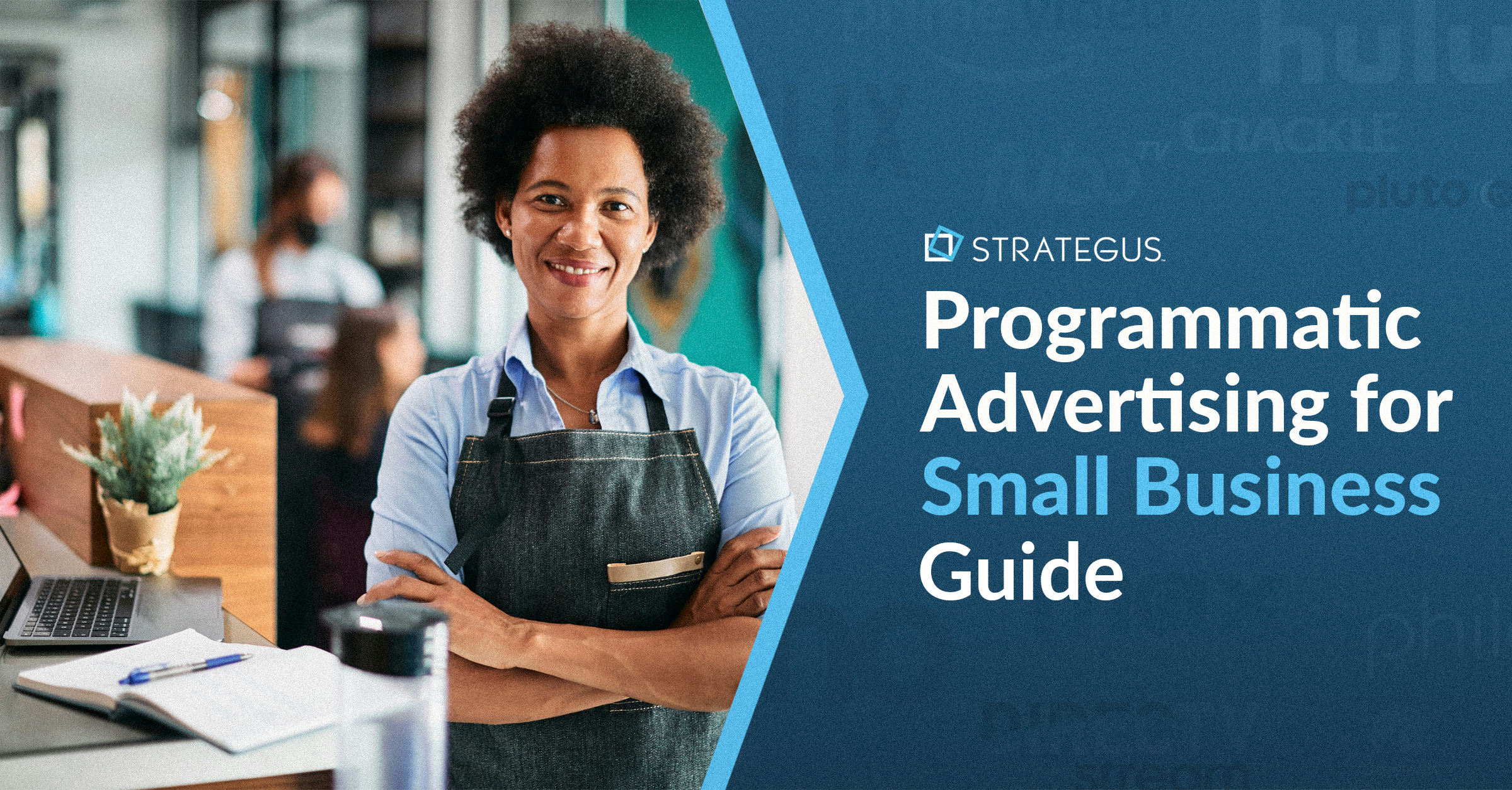
A small business owner in 2010 trying to buy video ads online used to go through an entirely different process. They'd need separate deals with YouTube, Hulu, and a dozen other platforms. Different contracts, different formats, different metrics. By the time campaigns launched, half their budget was eaten up by administrative headaches and their target audience had already moved on to the next big platform.
Those days are officially buried under streaming services, second screens, and viewers who've become accustomed to avoiding traditional commercials. While viewers are scattered across hundreds of platforms and devices, advertisers actually gained more control than ever before. Programmatic video advertising has built an entirely new playing field where a local bakery can target bread lovers within a five-mile radius just as easily as Nike can launch a global campaign.
But, for every small business owner who's mastered this technology, there are dozens more staring at dashboards full of acronyms (DSP? SSP? RTB?), wondering if they accidentally stumbled into a computer science exam.
The good news? Understanding programmatic video advertising isn't nearly as complicated as the industry makes it seem. We're going to break down the entire programmatic ecosystem and explain how those lightning-fast auctions work and why your competitors seem to be everywhere your customers are. Here's everything you need to know about programmatic video advertising.
Key Takeaways
- Programmatic video advertising automates ad buying in real time, helping small businesses reach the right audience with less waste.
- It offers cost-efficient targeting, premium ad inventory access, and campaign scalability, even with modest budgets or local objectives.
- Ad formats like CTV, display, audio, native, and mobile allow small businesses to tailor campaigns to specific channels and customer behaviors.
- Success relies on clear goals, smart audience segmentation, continuous optimization, and tracking key metrics like CPA, ROAS, and CLV.
- Multi-touch attribution, view-through conversions, and real-time analytics ensure every dollar spent contributes to measurable business growth.
- Strategus provides managed programmatic services for small businesses, offering expert execution, performance insights, and scalable results. Talk to a Strategus expert to learn more today.
What Is Programmatic Video Advertising?
Programmatic video advertising automates the process of buying and placing digital ads using software and data. Instead of manually negotiating with publishers or placing ads one by one, programmatic technology handles these tasks in milliseconds.
Think of programmatic advertising as your smart assistant for ad placement. When someone visits a website or opens an app, the programmatic system instantly evaluates whether this person matches your target audience. If they do, the system automatically bids on that ad space through real-time bidding (RTB). The highest bidder wins, and their advertisement appears immediately — all in less than 100 milliseconds.
This differs dramatically from traditional advertising, which requires direct negotiations, fixed pricing, and broad audience targeting. With programmatic, you pay only for impressions served to your specific target audience. The automated system finds these customers wherever they browse online, eliminating waste and improving your return on investment.
Benefits of Programmatic Advertising for Small Businesses
Programmatic advertising isn’t just for big-budget brands. In fact, it can be a powerful and efficient growth tool for small businesses that want to maximize every dollar spent. Here are some of the key benefits that make it an ideal choice for small business owners:
- Cost Efficiency: Programmatic advertising ensures small businesses only pay for impressions that reach the right audience, reducing wasted spend and increasing ROI.
- Precise Targeting: Allows local or niche businesses to reach specific demographics, interests, and locations that align directly with their ideal customer profile.
- Real-Time Optimization: Campaigns can be adjusted mid-flight based on performance data, eliminating the lag and inefficiency of traditional ad buys.
- Premium Inventory Access: Small businesses can appear on top websites and streaming platforms usually reserved for big brands, leveling the playing field.
- Scalability: Programmatic campaigns can grow with your business, making it easy to increase or decrease spend without starting from scratch.
- Actionable Insights: Provides detailed analytics and attribution reports to help small businesses refine strategy and make informed decisions.
Types of Programmatic Advertising for Small Businesses
Different programmatic ad formats serve different business goals. Understanding each type helps you choose the right mix for your specific needs and budget.
Display Advertising
Display ads remain the foundation of programmatic advertising. These visual advertisements appear on websites across the internet, from local news sites to national publications. Modern display ads go far beyond static banners to include rich media formats with animation and interactivity.
Display advertising offers small businesses broad reach with visual impact. Well-designed ads build brand recognition while driving traffic to your website. The format works particularly well for retargeting campaigns, re-engaging website visitors to keep your business top-of-mind until they're ready to purchase. Display ads can be sized for different placements, from small rectangles to large takeover formats, giving you flexibility in both budget and creative approach.
Connected TV (CTV) Advertising
Connected TV represents one of programmatic's most exciting opportunities for small businesses. CTV ads appear on streaming services like Hulu, Roku, YouTube TV, and other platforms where viewers have shifted from traditional cable. These are the commercials viewers see while watching their favorite shows on smart TVs and streaming devices.
Previously, TV advertising required massive budgets and broad geographic targeting. CTV changes everything by enabling precise audience targeting with budgets accessible to small businesses. You can run professional video ads targeted to specific neighborhoods, demographics, or interests, reaching cord-cutters who've abandoned traditional television.
Online Video Advertising
Beyond CTV, programmatic online video ads appear across websites and apps. These ads play before (pre-roll), during (mid-roll), or after (post-roll) video content on news sites, social platforms, and specialty websites. Video advertising combines the engagement power of television with the targeting precision of digital marketing.
Creating video content might seem daunting, but simple productions often perform best. A 15-30 second video showcasing your products, services, or customer testimonials can drive remarkable results. Many businesses successfully repurpose existing video content from social media or websites. The key is grabbing attention in the first three seconds and including captions since many viewers watch without sound.
Audio Advertising
Programmatic audio reaches listeners through music streaming services like Spotify and Pandora, podcasts, and digital radio stations. As consumers spend more time with audio content during commutes, workouts, and throughout their day, these ad formats offer unique opportunities to connect with engaged audiences.
Audio ads work particularly well for businesses with strong local presence or compelling offers. A restaurant can promote lunch specials to office workers by streaming music during work hours. A fitness studio can reach health-conscious consumers listening to workout playlists. The intimate nature of audio, often consumed through headphones, creates a personal connection with listeners that other formats can't match.
Native Advertising
Native ads blend seamlessly with editorial content, appearing as sponsored articles, recommended content, or in-feed placements. This format builds trust by providing valuable information while subtly promoting your business. Unlike banner ads that interrupt the user experience, native advertising feels organic and non-intrusive.
Small businesses use native advertising to establish expertise and thought leadership. A financial advisor might sponsor articles about retirement planning that appear on financial news sites. A home improvement contractor could create content about seasonal home maintenance. The key is providing genuine value while naturally incorporating your business expertise.
Mobile Advertising
With most internet usage now happening on mobile devices, mobile-specific ad formats deserve special attention. Mobile programmatic includes in-app advertisements, mobile web display, and location-based targeting that leverages the unique capabilities of smartphones.
Mobile's greatest strength lies in its location-based capabilities. Geofencing technology can trigger ads when potential customers enter specific areas, such as showing restaurant ads to people near your location during meal times or promoting special offers when shoppers are near your store. Mobile ads can also drive immediate actions like click-to-call buttons or directions to your business, bridging the gap between digital advertising and physical visits.
Selecting appropriate ad formats depends on your business model, target audience, and campaign goals. B2B companies often find success with display and native formats that establish credibility. B2C businesses frequently combine display retargeting with CTV for maximum impact. Consider starting with one or two formats and expanding based on results.
Getting Started with Programmatic Advertising
If you're ready to launch a programmatic campaign, the good news is that you don’t need enterprise-level budgets or a large in-house team to make it work. For small businesses, programmatic offers a way to compete strategically, but success hinges on smart planning and execution.
Start with Clear, Measurable Goals
Whether your focus is driving local foot traffic, increasing online sales, or improving brand visibility, your campaign should be built around a specific objective. This will inform everything from targeting criteria to creative messaging and reporting. Don’t try to do everything in one campaign; be focused.
Define Your Audience Intelligently
Leverage whatever customer insights you already have, CRM data, website analytics, or past campaign reports, to identify who your audience is and where they spend time online. Think beyond age and location. Behavioral traits, intent signals, and interests can help sharpen your targeting and maximize efficiency.
Work with a Managed Partner
Running a programmatic campaign is highly technical. From bid strategies and audience segmentation to cross-device attribution and frequency caps, the learning curve is steep. Partnering with a managed service provider like Strategus eliminates that burden. We handle setup, execution, optimization, and reporting, all while working within your budget and aligning with your business goals.
Budget Strategically
You don’t need to spend tens of thousands to get results. With careful targeting and a clear flight plan, programmatic campaigns can be run with modest investments. Think quality over quantity: better targeting means fewer wasted impressions and more meaningful interactions.
Optimize Continuously
Programmatic thrives on real-time data. Once your campaign launches, the real work begins. Performance should be continuously analyzed and adjusted, not just reported. A strong partner will track results across devices and channels, refining targeting and creative to stretch your budget further and improve outcomes over time.
Measuring Programmatic Advertising Success
Effective measurement separates successful programmatic campaigns from expensive experiments. Small businesses need clear metrics proving advertising investments generate profitable returns. Focus on indicators directly tied to business results rather than vanity metrics that look impressive but don't impact your bottom line.
Primary Business KPIs
These metrics directly measure campaign impact on your business and should guide all optimization decisions.
Cost Per Acquisition (CPA)
Your CPA represents total advertising spend divided by the number of new customers acquired. This fundamental metric tells you exactly how much you're paying to gain each customer. For a plumbing company spending $5,000 monthly and gaining 50 new customers, the CPA would be $100.
To determine if your CPA is profitable, compare it against your average customer value. If your average plumbing job generates $500 in profit, a $100 CPA delivers a 5:1 return on your acquisition investment. Track CPA by campaign, audience segment, and ad format to identify your most efficient customer acquisition channels. Remember that CPAs often start higher and improve as campaigns optimize; don't panic if initial costs seem high.
Return on Ad Spend (ROAS)
ROAS measures revenue generated for every dollar spent on advertising. A 5:1 ROAS means earning $5 for every $1 invested. Calculate this by dividing total revenue from campaign-attributed customers by your total ad spend.
For example, if you spend $3,000 on programmatic ads and generate $15,000 in sales, your ROAS is 5:1. Different industries see different benchmarks; e-commerce might target 4:1 ROAS while service businesses with higher margins might achieve 10:1 or better. Track ROAS over different time periods since some customers take longer to convert. A campaign might show 3:1 ROAS after 30 days but 7:1 after 90 days as more prospects complete purchases.
Conversion Rate
Conversion rate shows the percentage of people who see your ads and take desired actions. If 1,000 people click your ad and 50 fill out a contact form, your conversion rate is 5%. This metric helps identify whether your landing pages and offers resonate with the audiences you're targeting.
Different actions have different typical conversion rates. Website visits to form fills might convert at 2-5%, while form fills to purchases might convert at 20-30%. Track micro-conversions (like email signups) alongside macro-conversions (like purchases) to understand the full customer journey. Low conversion rates often indicate misalignment between ad messaging and landing page experience rather than poor targeting.
Customer Lifetime Value (CLV)
CLV projects the total revenue you'll receive from a customer throughout your relationship. This longer-term view justifies higher acquisition costs for quality customers. A lawn care company might calculate that customers stay an average of three years at $150 monthly, creating a $5,400 CLV.
To calculate CLV, multiply average purchase value by purchase frequency by customer lifespan. For subscription businesses, it's monthly revenue times average months retained. Understanding CLV changes how you view acquisition costs; spending $200 to acquire a customer worth $5,400 makes obvious sense. Focus on acquiring high-CLV customers even if initial costs seem higher.
Supporting Performance Metrics
These indicators help optimize campaigns even when they don't directly measure revenue:
- Click-Through Rate (CTR): Indicates creative effectiveness. Industry averages vary, but most display campaigns see 0.05-0.10% CTR
- View-Through Conversions: Tracks customers who saw ads without clicking but later converted
- Brand Search Volume: Measures increased searches for your business name
- Cost Per Thousand Impressions (CPM): Helps understand media efficiency and targeting precision
Attribution Models and Measurement
Attribution determines which touchpoints deserve credit for conversions. Different models paint different pictures of campaign effectiveness. Last-click attribution gives all credit to the final interaction before conversion, potentially undervaluing awareness campaigns. First-touch attribution credits the initial interaction, which might overemphasize top-funnel activities.
Multi-touch attribution distributes credit across all interactions, providing a more balanced view. Time-decay models give more weight to recent interactions while still crediting earlier touchpoints. Data-driven attribution uses machine learning to determine each touchpoint's actual impact based on your specific data.
Setting Realistic Benchmarks
Industry averages provide starting points, but your specific situation determines appropriate targets. New businesses typically see higher acquisition costs while building initial awareness. Established businesses should achieve lower costs through brand recognition. Service businesses with high transaction values can afford higher CPAs than retailers with thin margins.
Timeline expectations vary by campaign type. Display awareness campaigns might take 2-3 weeks to show meaningful results. Retargeting campaigns often deliver immediate returns since they reach warm audiences. CTV campaigns build awareness gradually before driving a direct response. Plan for at least 90 days to gather statistically significant data.
Tracking Setup and Verification
Proper conversion tracking forms the foundation of measurement. Install tracking pixels on key pages, including thank you pages after form submissions, purchase confirmation pages, and appointment booking confirmations. Set up phone tracking with dynamic number insertion to attribute calls to specific campaigns.
Test tracking regularly by clicking your own ads and completing conversions. Verify that data appears correctly in reporting dashboards. Many campaigns fail not because of poor performance but because broken tracking misses conversions. Regular testing prevents this costly mistake.
Closing Thoughts: Is Programmatic Advertising Worth it for Small Businesses?
Absolutely. Programmatic advertising is not just for large enterprises with deep budgets. In fact, it may be even more valuable for small businesses. It allows for hyper-targeted reach, real-time bidding efficiency, and detailed performance measurement, all of which help ensure that every advertising dollar is spent wisely. For businesses that need to be smart and selective with their budgets, programmatic offers the ability to reach high-intent audiences without the waste that often comes with traditional media buys.
But while the technology is powerful, it also comes with a steep learning curve. Running programmatic campaigns effectively requires access to the right platforms, deep knowledge of data and targeting strategies, and time-intensive campaign management. For many small business owners, that level of expertise and bandwidth just isn’t realistic, and hiring an in-house team can be prohibitively expensive.
That’s where Strategus shines. As a fully managed programmatic partner, we take care of everything: campaign strategy, creative execution, media buying, cross-device targeting, real-time optimization, and advanced attribution. But what really sets us apart is our focus on outcomes.
We don’t just serve ads; we deliver measurable results that align with your business goals. Whether you're trying to drive store visits, increase online purchases, or grow local awareness, we design campaigns that make an impact and scale with you.
Our team becomes an extension of yours, offering enterprise-grade capabilities with the kind of hands-on support and transparency small businesses need. With over a decade of experience, relationships with 200+ premium inventory sources, and proprietary tech that simplifies reporting and ROI measurement, Strategus makes programmatic accessible, affordable, and effective, no matter your size or industry.
Ready to scale smarter and make your ad budget work for you? Talk to a Strategus expert to learn more today.

Traci Ruether is a content marketing consultant specializing in video tech. With over a decade of experience leading content strategy, she takes a metrics-driven approach to storytelling that drives traffic to her clients' websites. Follow her on LinkedIn at linkedin.com/in/traci-ruether or learn more at traciruether.com.
Strategus is a managed services connected TV(CTV) advertising agency with over 60,000+ campaigns delivered. Find out how our experts can extend your team and drive the result that matter most.
Talk to an Expert
Table of Contents
- What Is Programmatic Video Advertising?
- Benefits of Programmatic Advertising for Small Businesses
- Types of Programmatic Advertising for Small Businesses
- Getting Started with Programmatic Advertising
- Measuring Programmatic Advertising Success
- Is Programmatic Advertising Worth it for Small Businesses?
Seeking a Custom CTV Strategy That Delivers?
What to read next
App Event Tracking: Tie Mobile App Activity to CTV Campaigns
Let’s say you’re running a CTV campaign for a personal finance app.
5 minutes read

Stop Guessing Who Your Audience Is — Let Their Apps Tell You
Connected TV (CTV) targeting often falls in one of two camps.
8 minutes read
See Who Bought After Your Ad + How Much They Spent
You can’t improve what you can’t measure. And for years, that’s been a major problem with TV advertising.
4 minutes read
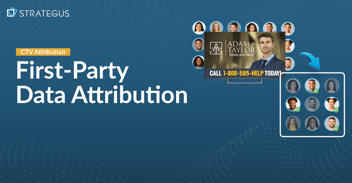
First-Party Attribution: Match Ads to Sales With CRM Data
The value of first-party data continues to grow.
7 minutes read



